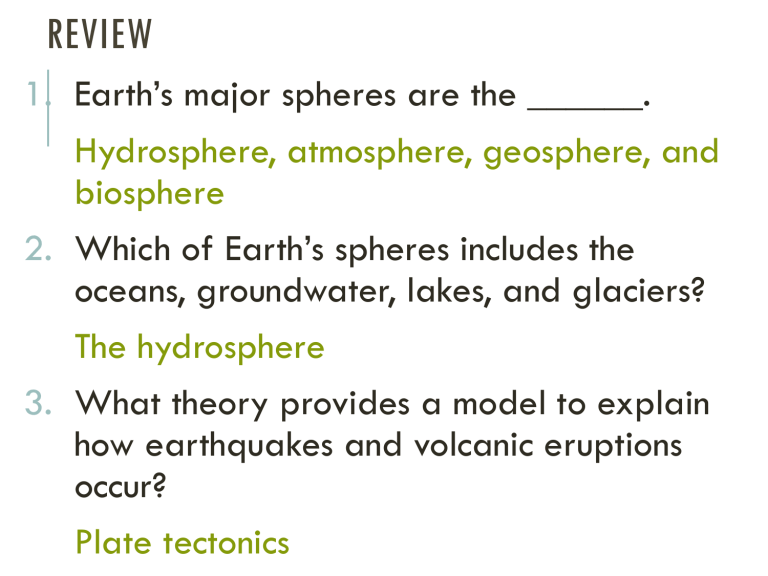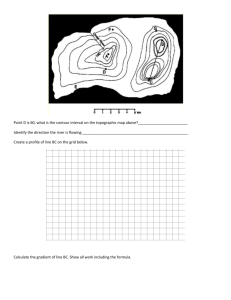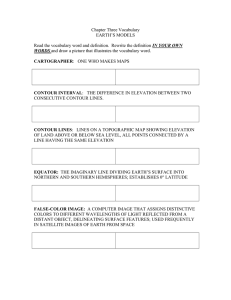1.3

REVIEW
1.
Earth’s major spheres are the ______.
Hydrosphere, atmosphere, geosphere, and biosphere
2.
Which of Earth’s spheres includes the oceans, groundwater, lakes, and glaciers?
The hydrosphere
3.
What theory provides a model to explain how earthquakes and volcanic eruptions occur?
Plate tectonics
REPRESENTING EARTH’S
SURFACE
Chapter 1, Section 3
DETERMINING LOCATION
Latitude – the distance north or south of the equator, measured in degrees
Longitude – the distance east or west of the prime meridian, measured in degrees
Lines of latitude and longitude form a global grid; allowing us to state the absolute location of any place on Earth
The equator divides Earth in two; each half is called a hemisphere (northern and southern)
The prime meridian and the 180º meridian divide Earth into eastern and western hemispheres
GLOBAL GRID
LOCATING PLACES USING THE GRID
CONCEPT CHECK
How does the global grid divide Earth?
Into hemispheres
MAPS AND MAPPING
No matter what kind of map is made, some portion of the surface will always look either too small, too big, or out of place; mapmakers have, however, found ways to limit the distortion of shape, size, and distance
The Mercator projection is used by many seagoing navigators, as it uses lines of longitude that are parallel, making the map rectangular
The Robinson projection shows most distances, sizes, and shapes accurately, but is distorted around the edges
Conic projections are used to make a map of a smaller area
Gnomonic projections are used by sailors and navigators for short distances
PROJECTIONS
CONCEPT CHECK
What major problem must mapmakers overcome?
Representing round Earth on a flat paper causes distortion in shape, size, and distance
TOPOGRAPHIC MAPS
Topographic Map – a map that represents Earth’s surface in three dimensions; it shows elevation, distance, directions, and slope angles
Topographic maps differ from other maps discussed so far because topographic maps show elevation of Earth’s surface by means of contour lines
Contour Line – line on a topographic map that indicates an elevation; every point along a contour line has the same elevation
Contour Interval – on a topographic map, tells the distance in elevation between adjacent contour lines
A map is drawn to scale, where a certain distance on the map is equal to a certain distance on the surface
A map that shows the type and age of the rocks that are exposed, or crop out, at the surface is called a geologic map
CONTOUR LINES
GEOLOGIC MAP
CONCEPT CHECK
How do topographic maps indicate changes in elevation?
Contour lines, lines close together indicate a steeper slope
ADVANCED TECHNOLOGY
Today’s technology provides us with the ability to more precisely analyze Earth’s physical properties
Scientists now use satellites and computers to send and receive data, which are then converted into usable forms such as pictures and numerical summaries
The process of collecting data about Earth from a distance, such as from orbiting satellites, is called remote sensing
We can use this technology in our daily lives too; many newer cars use the Global Positioning System (GPS) to provide maps to different destinations
CONCEPT CHECK
What types of advanced technology are used in mapmaking today?
Satellites, computers, GPS, sonar, high-powered telescopes, etc.







